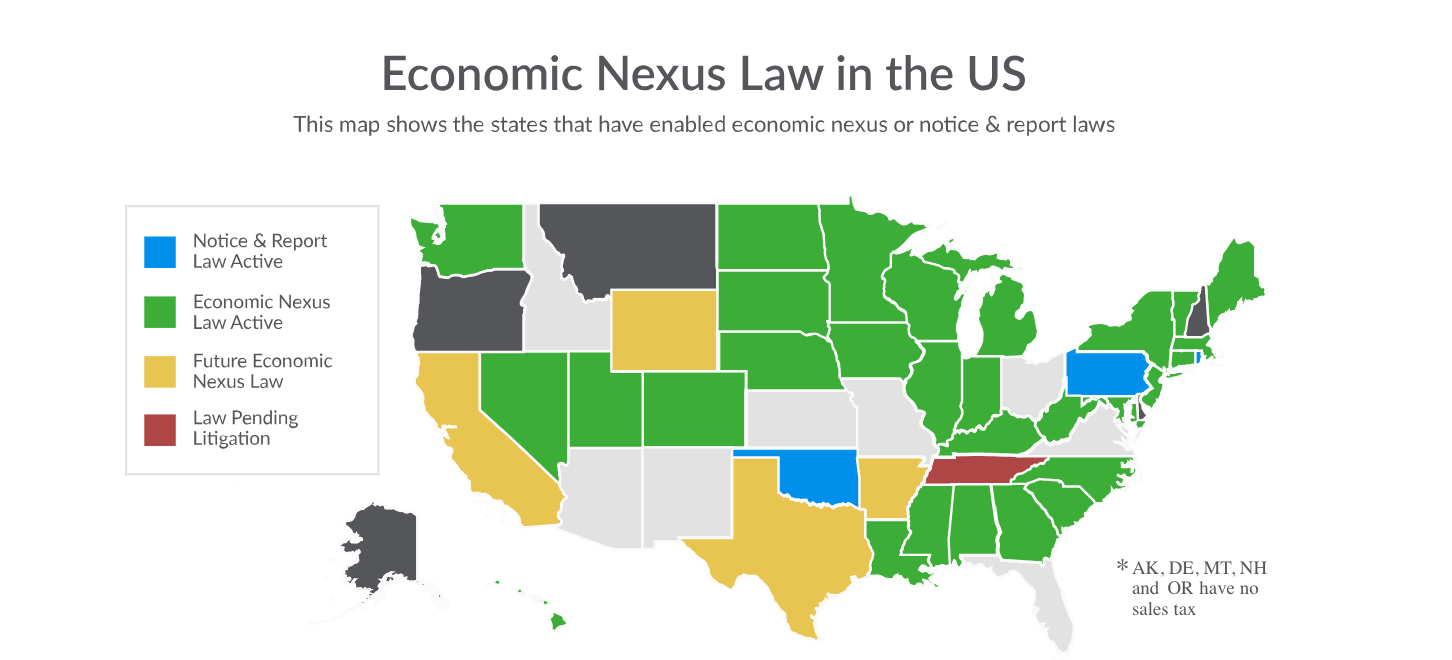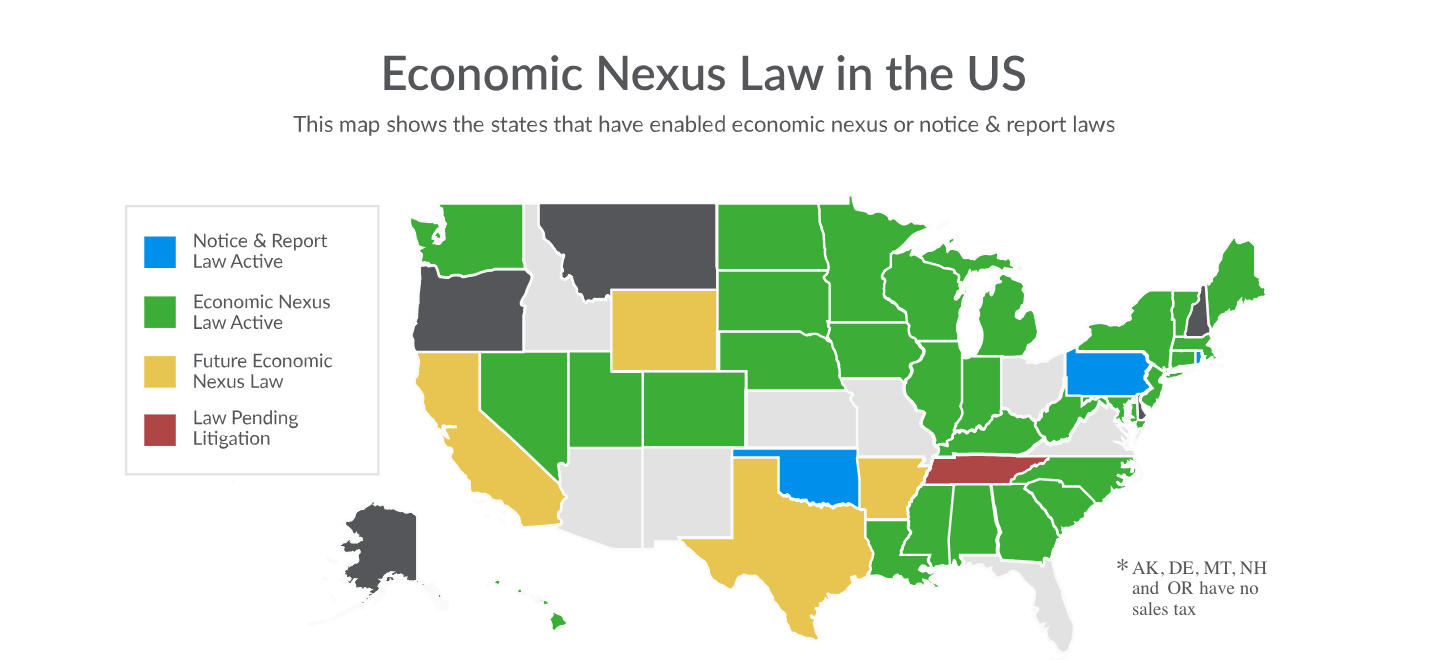A Basic Introduction to eCommerce Sales Tax
Launching an eCommerce store can be a dream come true for many entrepreneurs. It opens the doors to endless customers around the world that brick and mortar stores could never reach. One big difference between the two, however, is that retailers who sell on major marketplaces and online platforms have a unique set of laws and rules to follow when it comes to sales tax compliance.
We talk with thousands of sellers in similar situations who aren’t sure how and when to collect sales tax. The good news is, it doesn’t have to be something you put off once you gain a basic understanding. Keep reading for some tips to get started and give yourself some peace of mind for your business.
How Do I Get Started Collecting Sales Tax?
Sales tax is a pass-through tax. Meaning, you as a business owner are a middleman that must collect taxes and pass them over to the state. The money is never truly yours, nor should it ever be paid out of your pocket. With this frame of mind, sales taxes are just part of the everyday processes of owning a business, rather than a task you put off until filing time.
To understand where you need to be sales tax compliant, you must first learn
- Which states collect sales tax
- Where you have nexus
- How to collect sales tax
- Learn what products are taxable.
Which States Collect Sales Tax?
There is currently no federal sales tax responsibility, but instead, the individual states are empowered to define and create their own sales tax laws. Based on where you have nexus, you’re responsible for adhering to the state and local tax laws. Depending on the volume and size of your business, you could potentially be required to collect sales tax in as many as 46 different places (45 states + Washington D.C.).
The most important thing to understand when collecting sales tax is the concept of nexus. At its simplest, nexus is a term that means you have some type of significant presence in that state. Where physical nexus (i.e., you have a physical store, employees, inventory, etc) was once a common trigger for a sales tax requirement, most sellers must now recognize economic nexus as well.
What is an Economic Nexus?

The phrase “economic nexus” grew its legs after the 2018 Supreme Court ruling on the South Dakota vs Wayfair case. Overturning a decades-old decision, the landmark case gave the power to the states to set their own nexus rules based solely on economic activity, regardless of physical presence. As a result, sellers are now responsible for collecting sales tax in states outside of their physical location if they meet a specific state’s economic activity threshold
If you happen to live or sell into one of the five states with no sales tax (Alaska, Delaware, Montana, New Hampshire, and Oregon), you’re in luck. But for the rest of the country, you’ll want to familiarize yourself with the economic (and physical) nexus law thresholds. These are usually some combination of total sales in a calendar year or a total number of transactions. To find out where you meet the state-defined nexus thresholds, we recommend using our free sales and transaction checker.
How do I Collect Sales Tax?
Once you’ve determined the states you owe sales taxes for, you’ll need to register for a sales tax permit in each of those states. It’s unlawful to charge sales tax without the permit, so you’ll want to make sure you register as a first step. Gather your important business information, like the employee identification number, and set aside some time to register on the various states’ Department of Revenue websites.
It may take a few weeks to get your new tax ID number, but after it arrives you’ll receive instructions on how to file your sales tax returns. You’ll also be assigned a filing frequency that outlines how often you’ll need to remit payment to the states (some are monthly, quarterly, annually, etc).
After you receive your sales tax license and information, you’ll need to check out the platforms or marketplaces you sell on to enable sales tax collection. TaxJar has step-by-step guides on how to do this inside Amazon and Shopify. For other eCommerce platforms or marketplaces, we recommend reaching out to them and asking for their instructions on how to enable collection for your store.
What if My Marketplace Collects Sales Tax on My Behalf?
With the passing of marketplace facilitator laws, you may have the sales taxes handled by the marketplace itself. There are 10+ states (these are changing often) with current marketplace facilitator laws to be aware of if you’re currently selling on marketplaces like Amazon, Etsy, Walmart, etc.
These marketplace facilitator laws are helpful for businesses that operate on marketplaces alone, as it can reduce the sales tax requirements in the states where this legislation has passed. However, for most eCommerce businesses that are multi-channel and sell outside of marketplaces, it doesn’t fully eliminate your entire sales tax responsibilities in those states.
It’s important to remember that sales tax is organized at the state-level, not at the channel level. Therefore if you meet a physical or economic requirement to collect sales tax in a particular state, you’re required to collect sales tax across all of the platforms where you sell. If the marketplace is already collecting in that particular state, you’ll still need to collect, file and remit for any sales made outside of that platform.
What Else Factors into Collecting Sales Tax?
The steps covered above are a basic introduction to becoming sales tax compliant. Other factors affect how, when, and where you collect, such as if you’re in a location-based, or origin-based state; the rates of the actual products you’re selling, and sales tax discounts for on-time filings.
While it’s important to familiarize yourself with concepts like nexus, sales tax rates, and marketplaces, its equally important to find resources you can trust to walk you through the path to compliance.
TaxJar’s blog is a wealth of information to learn the nuances of sales tax, what’s taxable, and to stay up-to-date on the most important sales tax legislation. Sales tax is changing rapidly, and we recommend choosing an award-winning sales tax software that can ensure you’re accurate and compliant. And when it’s time for your business to automate your sales tax requirements, TaxJar is here to help with a FREE 30-day trial.
About the Author
Jennifer Clark, TaxJar's Content Marketing Manager, aims to simplify sales tax for eCommerce retailers through enjoyable, engaging content. A long-time writer, Jennifer enjoys tackling complex subjects, researching sales tax and SaaS industry news, and interacting with the digital TaxJar community through social media.


